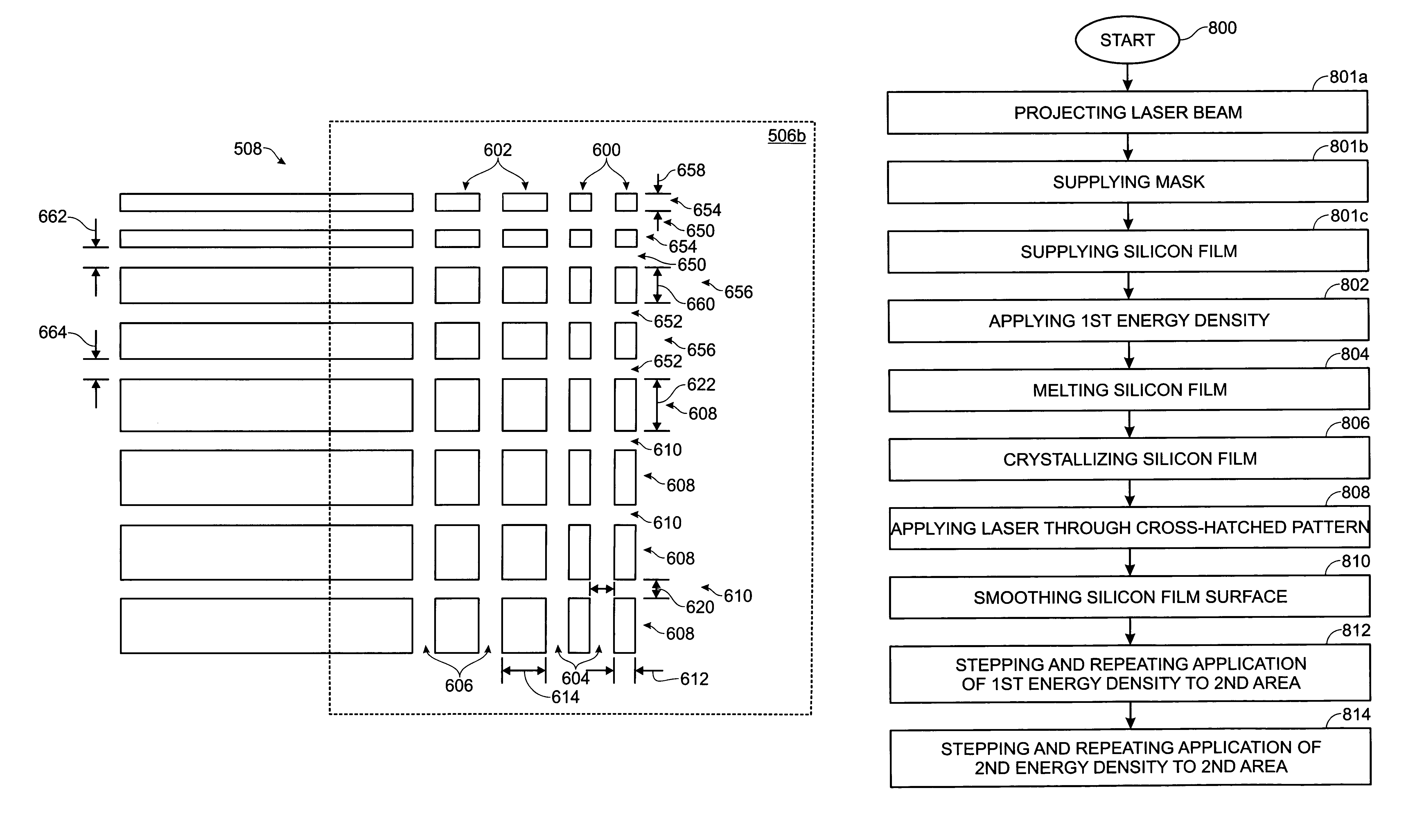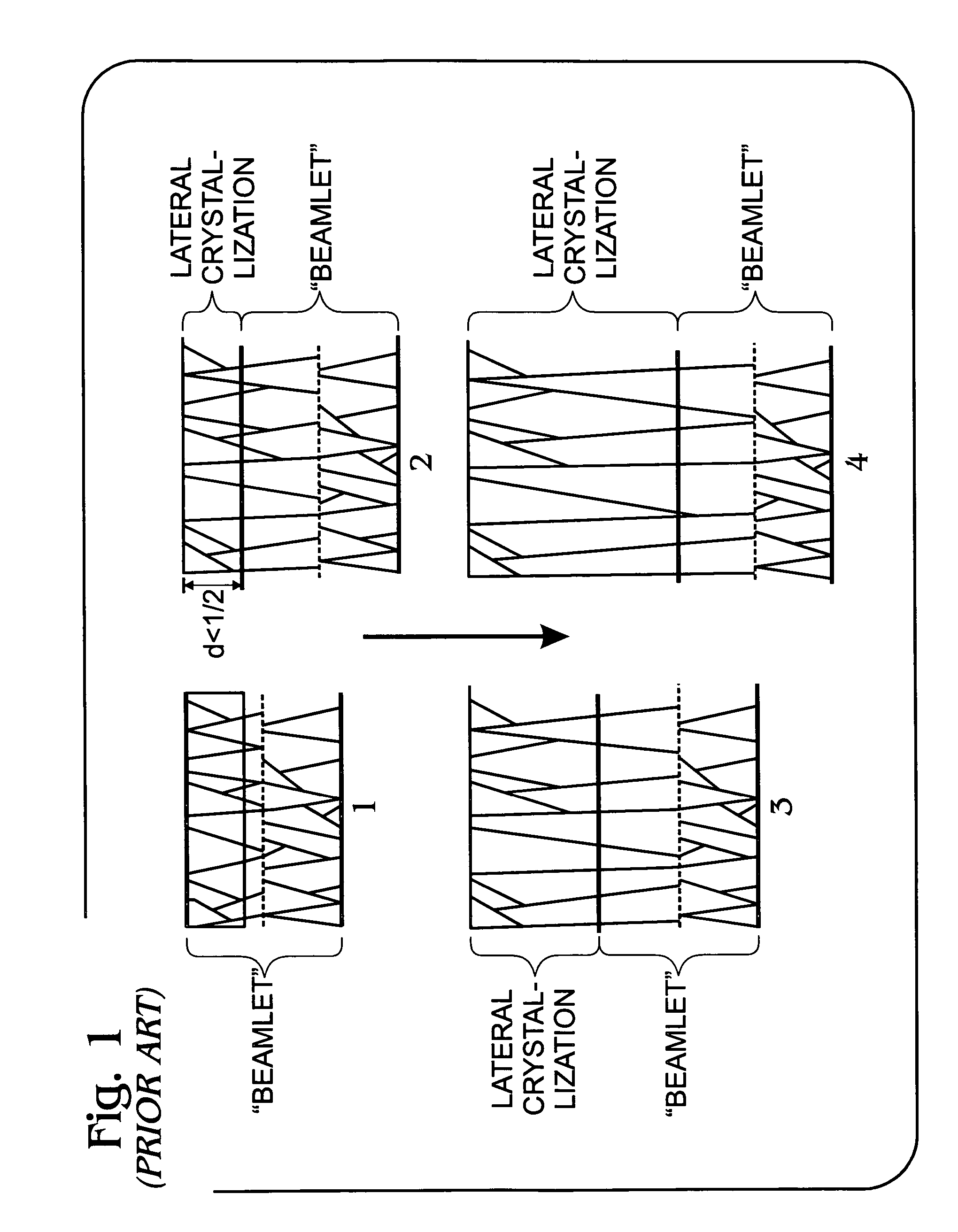Method for optimized laser annealing smoothing
a laser annealing and smoothing technology, applied in the field of post-crystallization annealing techniques, can solve the problems of not being able to control all these processes, the inability of conventional methods to achieve such quality differentiation, and the loss of throughput, so as to reduce the diffraction pattern of the mask edg
- Summary
- Abstract
- Description
- Claims
- Application Information
AI Technical Summary
Benefits of technology
Problems solved by technology
Method used
Image
Examples
Embodiment Construction
[0032]FIG. 5 is a plan view of the present invention laser annealing mask with cross-hatched sub-resolution aperture patterns. The mask 500 comprises a first section 502 with aperture patterns 504 (an example area is shown in the dotted line box) for transmitting approximately 100% of incident light. The mask 500 also includes at least one section with cross-hatched sub-resolution aperture patterns 506a and / or 506b (as shown in the dotted line boxes) for diffracting incident light. As described below, the mask 500 can include a plurality of sections with cross-hatched sub-resolution aperture patterns.
[0033]Shown is a second mask section 508 with cross-hatched sub-resolution aperture patterns 506a in an area adjacent a leading mask vertical edge 510 with respect to a first direction 512. That is, edge 510 is the leading edge when the mask 500 is moved in the first direction 512. A third mask section 514 with cross-hatched sub-resolution aperture patterns 506 is an area adjacent a tra...
PUM
| Property | Measurement | Unit |
|---|---|---|
| width | aaaaa | aaaaa |
| width | aaaaa | aaaaa |
| vertical gap width | aaaaa | aaaaa |
Abstract
Description
Claims
Application Information
 Login to View More
Login to View More - R&D
- Intellectual Property
- Life Sciences
- Materials
- Tech Scout
- Unparalleled Data Quality
- Higher Quality Content
- 60% Fewer Hallucinations
Browse by: Latest US Patents, China's latest patents, Technical Efficacy Thesaurus, Application Domain, Technology Topic, Popular Technical Reports.
© 2025 PatSnap. All rights reserved.Legal|Privacy policy|Modern Slavery Act Transparency Statement|Sitemap|About US| Contact US: help@patsnap.com



